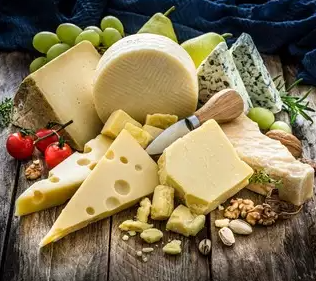Scientists from NIZO in the Netherlands (Wemmenhove et al., International Journal of Food Microbiology 2021(volume 357, November issue) created a model to predict the fate of Listeria monocytogenes in different cheese types. Undissociated lactic acid plays a significant role in the complete growth inhibition of Listeria monocytogenes in Gouda cheese. Low water activity conditions may contribute to growth inhibition. Based on the composition of the different cheese types, the concentrations of undissociated lactic acid were calculated for the cheeses. The ability to support growth of L. monocytogenes was predicted using the Gamma model, based on literature data on total lactic acid content, moisture content, fat content, pH, Aw, and temperature, and optimal growth rates in milk at 30–37 ◦C. The specific growth rates of L. monocytogenes in the various cheeses were calculated based on available experimental growth data. In 9 out of the 10 RTE cheeses reviewed, the undissociated lactic acid concentrations and aw determined growth/no growth of L. monocytogenes. No growth was correctly predicted for feta, Cheddar, and Gouda, and growth was correctly predicted for ricotta, queso fresco, Camembert, high-moisture mozzarella, cottage, and blue cheese. Growth of L. monocytogenes was not observed in practice upon inoculation of Emmental, whereas growth in this cheese type was predicted. Other factors, presumably acetic and propionic acid, are thought to be essential to inhibit the growth of the pathogen in Emmental. @ https://www.sciencedirect.com/science/article/pii/S0168160521003093?
Creation of a model to predict the fate of Listeria monocytogenes in different cheese types
No comments

